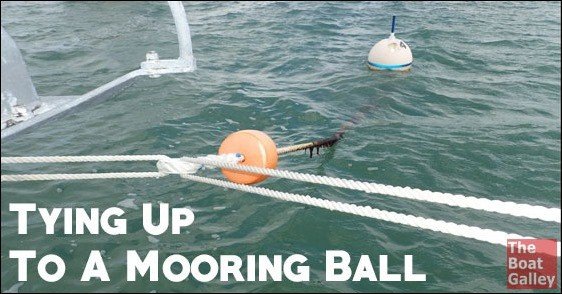Sabre602
Senior Member
- Joined
- Oct 19, 2017
- Messages
- 442
- Location
- United States
- Vessel Name
- Kingfisher
- Vessel Make
- 37' converted gillnetter/crabber
We just returned from several weeks of cruising and spent the time roughly split between mooring buoys and anchoring out. Our first night and our last night were at buoys and were the only nights where the wind and seas really kicked up at night.
It got me thinking...I've got a nice piece of 5/8" braid with spliced eyes that I use...I make a round turn through the metal ring on the buoy to reduce the chafe of the line sawing back and forth, and it's led back through the two bow chocks to the two mooring bitts on the foredeck.
BUT...it's only one line...there's no redundancy if it parts. And what kinds of loads is Kingfisher really putting on that line as we buck and bounce, the line creaking and groaning in the chock as we come to the end of a starboard tack before heading back to port?
Both nights I got up and clipped on a second line as a backup, using the line that we normally use when first picking up a mooring...it has a spring-gate stainless carabiner on a quick-release at the end of a boat hook.
I've noticed that some boats have an entire second bridle rigged to the buoy, slightly slacker than the first. What's your set-up? What type of line do you like? What size? Any special ways you address chafe? Favorite tips?
Thanks in advance!
It got me thinking...I've got a nice piece of 5/8" braid with spliced eyes that I use...I make a round turn through the metal ring on the buoy to reduce the chafe of the line sawing back and forth, and it's led back through the two bow chocks to the two mooring bitts on the foredeck.
BUT...it's only one line...there's no redundancy if it parts. And what kinds of loads is Kingfisher really putting on that line as we buck and bounce, the line creaking and groaning in the chock as we come to the end of a starboard tack before heading back to port?
Both nights I got up and clipped on a second line as a backup, using the line that we normally use when first picking up a mooring...it has a spring-gate stainless carabiner on a quick-release at the end of a boat hook.
I've noticed that some boats have an entire second bridle rigged to the buoy, slightly slacker than the first. What's your set-up? What type of line do you like? What size? Any special ways you address chafe? Favorite tips?
Thanks in advance!


